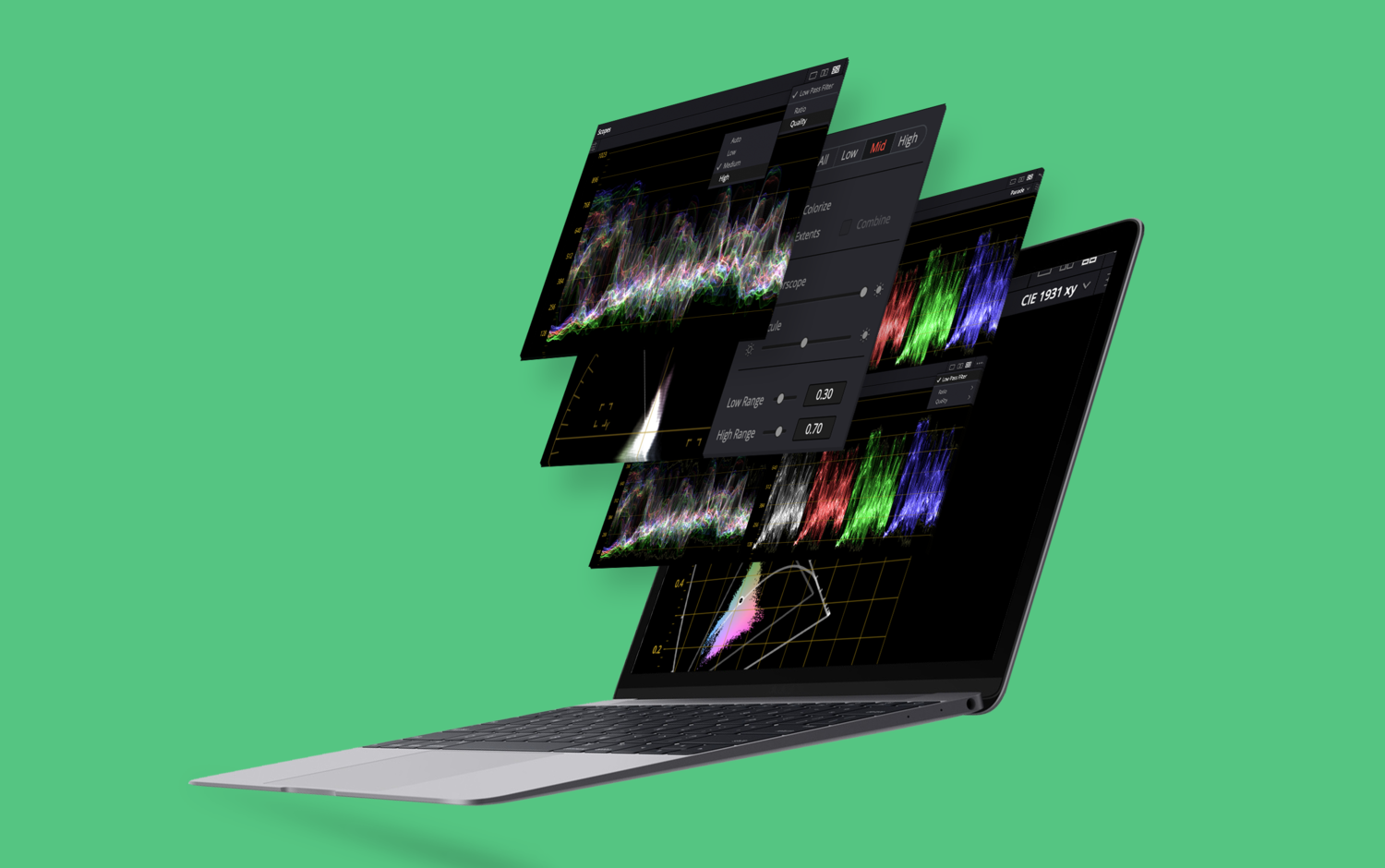Tips & Tricks - Get More out of Wipster
If you're a new user of Wipster or have just missed some of our recent updates, you might have missed some things:--Wipster's suite of integrations...
2 min read
![]() Wipster Content Team
:
Aug 29, 2020 8:44:00 PM
Wipster Content Team
:
Aug 29, 2020 8:44:00 PM

Each month, Blackmagic Design continues to iron out the bugs in the Resolve 16 beta, nearing prime time with each iteration. With so many new features that improve colorist workflow, there will soon be no reason to remain with the stable pre-NAB build. Some features, like the Cut Page, are among the biggest new changes, but there are a bevy of other features that improve workflow in smaller yet no less powerful ways. These include a major facelift to the scopes, an essential tool for any professional colorist. Let's explore these changes.
The biggest change to the scopes are the inclusion of the CIE chromaticity diagram, displaying the project's gamut as set in the Color Management preferences. This can be a useful, alternate way of looking at an image's trace to judge when values are out of legal range, and can even function as an educational tool for learning about the range of specific color spaces.

The CIE diagram displays the project's color space, in this case Rec. 709.
The Parade and Waveform scopes now have a low pass filter mode that reduces noise in the trace, visually sharpening the display of the scopes to allow for easier detection of elements in the frame.


The more defined lines in the second set of waveforms, with the low pass filter activated, makes the scopes easier to read.
The top image shows the waveform and parade scopes as colorists have been used to seeing them in Resolve: without the low pass filter applied. The bottom image has the low pass filter applied (accessed via the three-dotted button on the top right), which results in a cleaner and more defined display of the waveform in the scopes.
This is another of my favorites. The vectorscope now has the ability to toggle the shadows, midtones, and highlights of the image independently of each other. Plus, their ranges can be set, allowing for even greater visualization control.

The vectorscope controls allow for selecting the low, mid, or high range of the image, as well as setting the low and high range.
The histogram now appears outside of the scope panel embedded inside the Curves tab on the bottom Palette. In the Custom Curves tab, click the three dots for a pulldown menu to see the Input or Output of the histogram. This is great for finding the element in the frame to adjust much quicker. This feature might be the most imminently useful of this entire list.

The input or output can be selected, providing an easy way to find the element to be changed or display how the curves are adjusted in real time.
Resolve 16 ships with an "all new scopes engine" that is GPU accelerated, allowing the scopes to respond quicker than in the past. With the option to set the quality to low, medium, or high, the scopes will now respond to a range of hardware systems. The enterprising colorist will be able to toggle the modes based on if they're working on a stationary shot or want to see how the scopes react in real time while playing down a scene.

Access high or low quality scopes by clicking the three dots at the top right of the scopes (the same place where you can toggle between 4:3 and 16:9 modes).
The parade and the histogram now have the ability to view luminance along with the red, green, and blue channels. There's also an option for YCbCr mode in the Parade, a color space I have yet to use.

YRGB modes are available for the parade and histogram, and YCbCr is available for the parade.
Extents are weak elements in the signal that are of lesser importance to the stronger elements. These can now be revealed to give a full illustration of what information lies in the image, and can be useful for determining if data is being clipped beyond legal limits.

In this image, extents are lurking inside the purple rectangles.
If you're a new user of Wipster or have just missed some of our recent updates, you might have missed some things:--Wipster's suite of integrations...
We’re excited to announce a powerful new integration that brings Wipster’s intuitive video review tools directly into Final Cut Pro (FCP). Designed ...
1 min read